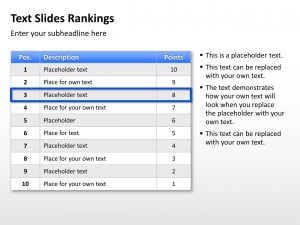Have you ever found yourself caught in the never-ending loop of copying and pasting data from one document to another? It might seem like a simple task, but in reality, it can quickly turn into a madness-inducing experience. In this blog article, we will explore the reasons why taking the time to copy and paste data into PowerPoint presentations and reports is not only inefficient but also prone to errors. Let’s dive in!
1. Time-consuming and Tedious
Copying and pasting data from one source to another can be an extremely time-consuming and tedious task. Imagine having to transfer large amounts of data, updating it frequently, and ensuring its accuracy. It’s a mind-numbing activity that not only consumes valuable time but also drains your energy.
2. Lack of Data Integrity
 When you copy and paste data, you run the risk of compromising the integrity of your information. Human errors can easily occur during the process, resulting in incorrect data being transferred to your PowerPoint presentations or reports. This can have serious consequences, especially when making important business decisions based on inaccurate data.
When you copy and paste data, you run the risk of compromising the integrity of your information. Human errors can easily occur during the process, resulting in incorrect data being transferred to your PowerPoint presentations or reports. This can have serious consequences, especially when making important business decisions based on inaccurate data.
3. Inconsistent Formatting
Maintaining consistent formatting across different documents can be a nightmare when relying on copy and paste. Fonts, colors, tables, and charts might not align properly, making your presentations and reports look unprofessional and disjointed. Spending extra time manually fixing formatting issues is not an efficient use of your valuable resources.
4. Difficult to Update
In an ever-changing business environment, data is constantly being updated. When using the copy and paste data method, updating your PowerPoint presentations or reports becomes a never-ending battle. You need to ensure that all the relevant data is updated across multiple documents. This not only adds to the complexity but also increases the chances of making mistakes.
5. Increased Risk of Errors
Manually transferring data through copying and pasting greatly increases the risk of errors. It’s easy to miss a number or accidentally skip a row, leading to inaccurate information being presented. These errors can have a significant impact on the credibility of your work, ultimately diminishing the value of your presentations and reports.
6. Wasted Productivity
By relying on the copy and paste method, you are diverting your time and energy away from more important tasks. Instead of focusing on analyzing the data, generating insights, or crafting compelling narratives, you find yourself trapped in the monotonous cycle of copying and pasting. This hampers your productivity and prevents you from adding real value to your work.
7. Missed Opportunities
Copying and pasting data limit your ability to explore different visualizations, analyze data in a more dynamic way, or create interactive reports. By embracing modern tools and techniques, such as data visualization software or business intelligence platforms, you can unlock hidden insights and enhance the overall impact of your presentations and reports.
Conclusion
Copying and pasting existing data into PowerPoint presentations and reports may seem like a quick and easy solution, but it comes with a myriad of challenges. From wasting time and energy to compromising data integrity and risking errors, this practice hinders productivity and limits your potential. Instead, consider exploring alternative approaches, such as data automation plugins for PowerPoint like DataPoint. Automated reporting tools that can save you time, ensure data accuracy, and elevate the quality of your work. Embrace a more efficient and effective way of presenting data, and break free from the madness of copying and pasting.



